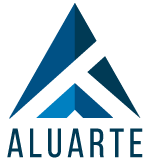- Ingeniería y Servicios Aluarte
- 938 384 2000
- contacto@aluarte.com.mx
What Your Form 990 Says about Your Tax-Exempt Organization
How to pick a Data Room Exchange Corporation
agosto 20, 20231xbet Codigo Promocional En Argentina ️ Lo Mejor Código Promocional 1xbet Argentina
agosto 23, 2023What Your Form 990 Says about Your Tax-Exempt Organization
For example, all organizations must answer lines 11a and 11b, which ask about the organization’s process, if any, it uses to review Form 990, even though the governing body isn’t required by federal tax law to review Form 990. If a section 4947(a)(1) nonexempt charitable trust has no taxable income under subtitle A, its filing of Form 990 can be used to meet its income tax return filing requirement under section 6012. Such a trust must, if it answers “Yes” on line 12a, report its tax-exempt interest received or accrued (if reporting under the accrual method) during the tax year on line 12b. Member income for purposes of this 85% Member Income Test is income derived directly from the members to pay for services that form the basis for tax exemption under section 501(c)(12), and includes payments for purchases of water, electricity, and telephone service.
Under these circumstances, the amounts paid by the law firm to C don’t require that the organization answer “Yes” on line 5, about C. Also, nothing in these facts would prevent C from qualifying as an independent member of the organization’s governing body for purposes of Form 990, Part VI, line 1b. Organizations must report compensation for both current and former officers, directors, trustees, key employees, and highest compensated employees. The distinction between current and former such persons is discussed below. Answer “Yes” if the organization, directly or indirectly through a disregarded entity or joint venture treated as a partnership for federal income tax purposes, operated one or more hospital facilities at any time during the tax year.
Form 990-EZ
If the organization received from a donor a partially completed Form 8283, Noncash Charitable Contributions, the donee organization should generally complete the Form 8283 and return it so the donor can get a charitable contribution deduction. If an organization receives a charitable contribution of property and within 3 years sells, exchanges, or otherwise disposes of the property, the organization may need to file Form 8282, Donee Information Return. Each jurisdiction can require the additional material to be presented on forms they provide.
Organizations that report more than $15,000 total on lines 1c and 8a must also answer “Yes” on Part IV, line 18, and complete Part II of Schedule G (Form 990). An “institutional trustee” is a trustee that isn’t an individual or natural person but an organization. Organizations must report compensation from themselves and from related organizations, which generally consist of parents, subsidiaries, brother/sister organizations, supporting organizations, supported organizations, sponsoring organizations of VEBAs, and contributing employers to VEBAs.
Filing a Form 990 Late
Enter all other contributions, gifts, and similar amounts the organization received from sources not reported separately on lines 1a through 1e. This amount includes contributions from donor advised funds (unless the sponsoring organization is a related organization) and from gaming activities. For a section https://business-accounting.net/shares-outstanding-vs-floating-stock-what-s-the/ 501(c)(21) trust, enter the total contributions received under section 192 from the coal mine operator who established the trust. The following table may be useful in determining how and where to report items of compensation on Form 990, Part VII, Section A, and on Schedule J (Form 990), Part II.
Copies of these items can also be obtained through the organization as discussed in the following section. Some members of the public rely on Form 990, or 990-EZ, as the primary or sole source of information about a particular organization. How the public perceives an organization in those cases may be determined by the information presented on its returns. The anti-abuse rule, Cashing Old Checks: How Long Is A Check Good For? found in section 501(c)(15)(C), explains how gross receipts (including premiums) from all members of a controlled group are aggregated in figuring the above tests. Gross income from an unrelated trade or business as defined in section 513. The person who has ultimate responsibility for managing the organization’s finances, for example, the treasurer or chief financial officer.
Planning to deduct for losses this tax season? Be sure to read the fine print.
Exempt organizations must make available for public inspection their Form 1023, 1023-EZ, 1024, or 1024-A application for recognition of exemption. Applications filed before July 15, 1987, need not be made publicly available unless the organization had a copy on July 15, 1987. The organization need not engage in more than a reasonable effort to obtain the necessary information to determine the number of independent voting members of its governing body and can rely on information provided by such members. The facts are the same as in Example 3, except that the Board Chair position wasn’t designated as an officer position under X’s bylaws, board resolutions, or state law. Nevertheless, because X compensated C for non-director activities involving staff meetings and evaluations during the tax year, C is deemed to have received compensation as an employee—not as a governing body member—for those activities.
Enter the gross amount of interest income from savings and temporary cash investments, dividend and interest income from equity and debt securities (stocks and bonds), and amounts received from payments on securities loans, as defined in section 512(a)(5), as well as interest from notes and loans receivable. Don’t include unrealized gains and losses on investments carried at FMV . Don’t deduct investment management fees from this amount, but report these fees Best Online Bookkeeping Services for Small Businesses of October 2023 on Part IX, line 11f. Whether a payment from a governmental unit is labeled a “grant” or a “contract” doesn’t determine where the payment should be reported on Part VIII. Rather, a grant or other payment from a governmental unit is reported here if its primary purpose is to enable the organization to provide a service to, or maintain a facility for, the direct benefit of the public rather than to serve the direct and immediate needs of the governmental unit.

